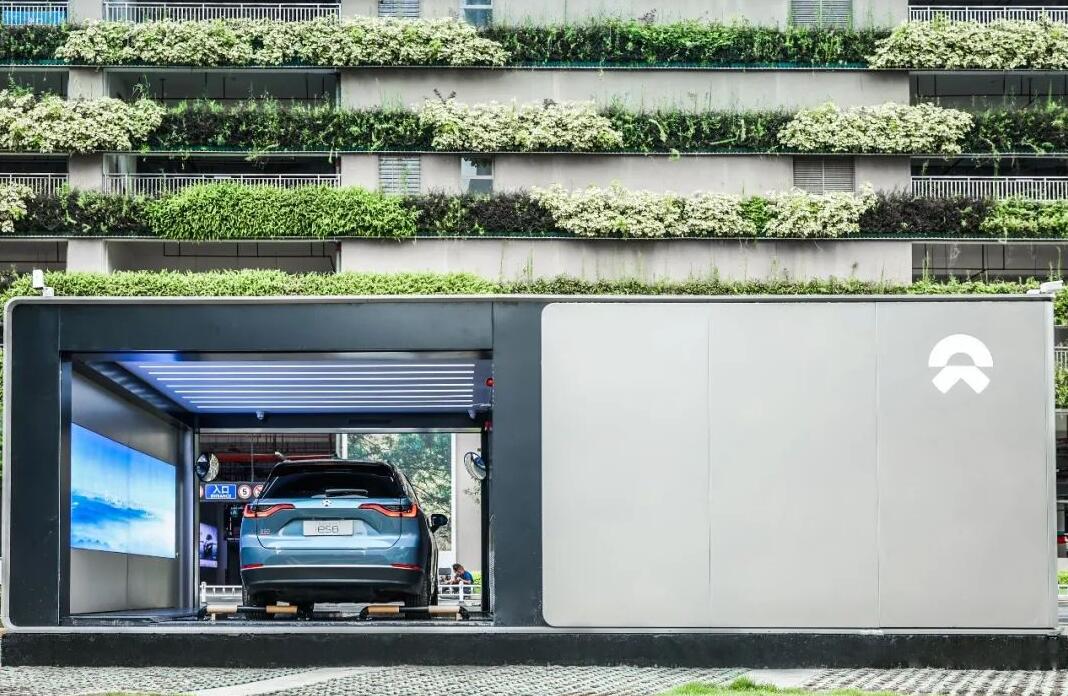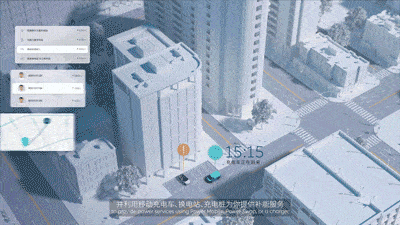This summer, a total of 108 Nio battery swap stations participated in peak load reduction initiatives in their cities.
(Image credit: Nio)
The power supply gap caused by high temperatures has become a focal point of discussion among the Chinese people recently. Nio's battery swap stations, with their energy storage function, are beginning to show their unique capabilities.
During this hot summer, more than 100 of Nio's battery swap stations have used their energy storage capabilities to help keep peak loads on the grid in their cities from rising to levels that would otherwise be higher, according to an article published today by the electric vehicle company.
As background, Nio currently has 1,067 battery swap stations, of which about 200 are first-generation and the rest are second-generation, the former capable of storing up to five batteries and the latter 13.
Nio owners have the option of going to battery swap stations to change to fully charged batteries, in addition to charging their vehicles as they would any other electric vehicle.
From June to now, 277 national weather stations in China have seen high temperatures exceeding previous historical records. Some places have recently experienced widespread power restrictions due to high temperatures and droughts that have strained power supply.
In Hefei, Anhui province, where Nio's plants are located, 13 of Nio's battery swap stations are being used as virtual power plants in conjunction with the city's efforts to reduce peak loads on the power grid.
Without affecting normal service to owners, these battery swap stations adjusted the power load by a total of 8 MWh in five days, equivalent to saving the real-time electricity consumption of more than 3,000 average residential households, according to the company.
As virtual power plants, Nio's battery swap stations can connect directly to the grid's dispatch center through a private network and receive grid dispatch instructions.
At around 8 pm on August 15, when the power dispatch control center of Hefei power supply company sent instructions to Nio battery swap stations in the city, the cumulative load of Hefei's power grid was reduced by 1.4 MWh within one minute, according to the company.
For these battery swap stations, the average power reduction was about 100 kW per station, and the charging time per battery increased by only about 5 minutes, Nio said.
At the same time, local Nio owners were still able to complete battery swaps in as little as three minutes, and the experience was not significantly different than usual, Nio said.
Nio didn't specify, but it appears that this is the company's battery swap stations actively reducing the charging power of the battery for a certain period of time after being instructed to do so, thus reducing the load on the grid.
For other car companies, the supercharging stations do not have energy storage and therefore cannot actively regulate the increase in load on the grid. Therefore, in the event of a power shortage, service can only be suspended.
State Grid, which supplies power to more than 1.1 billion people in China, has begun a pilot in some areas to limit the charging power of charging piles during the peak hours of 15:00-22:00.
And Tesla's Superchargers in Sichuan and Chongqing are largely in restricted or suspended service this week as local industrial electricity use is restricted.
Nio's current battery swap stations can store up to 13 batteries, and measurements show that each station has 600-700 kWh of energy storage capacity at any given time, the company said in today's article.
Each of the other 10-11 batteries can be discharged to the grid for 5-10 minutes while the user replaces the required battery, Nio said.
These stations can take orders from the grid at any time to discharge or boost charging power to the grid with little to no disruption to the user's normal battery swap service, Nio said.
In addition to the 13 battery swap stations in Hefei, 22 in Guangdong, 58 in Shanghai, 8 in Zhejiang and 7 in Nanjing are participating in a similar initiative.
In total, 108 Nio battery swap stations participated in grid peak load reduction initiatives in their cities this summer, supporting local power supply assurance, according to Nio.
Moreover, Nio's battery swap stations are prioritizing charging during off-peak hours every day.
Nio Power Cloud develops the charging strategy that best suits each battery swap station by predicting customers' power up demand and the price of electricity in different cities at different times of the day, the company said.
Of Nio's 1,067 battery swap stations in China, 575 are already implementing this strategy, or nearly 60 percent.
This has enabled Nio's stations to increase the percentage of electricity used during low periods from 12 percent to 20 percent, and has shifted peak electricity use by 410,000 kWh in the last 30 days.
In the future, Nio will use its battery swap stations to explore grid response and charging at different times of the day in more regions, especially in Sichuan and Chongqing, where clean energy is abundant, and in the provinces of northwest China, it said.


